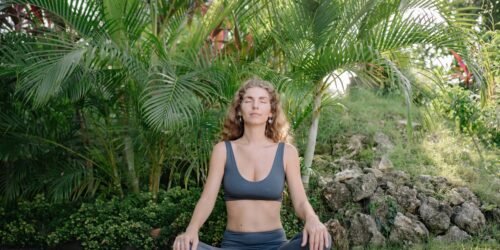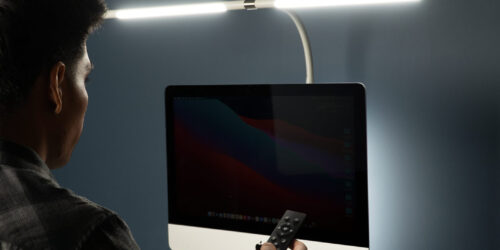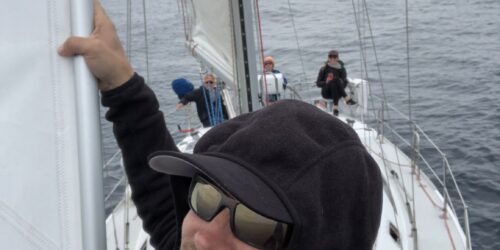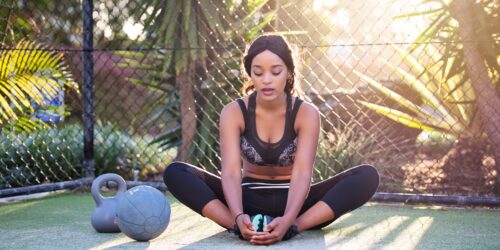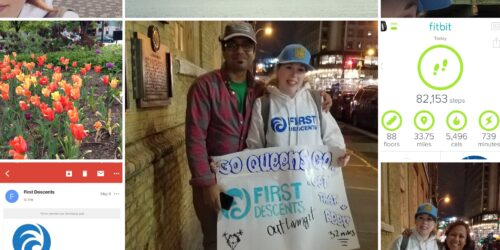Sleepwalking with a Wearable
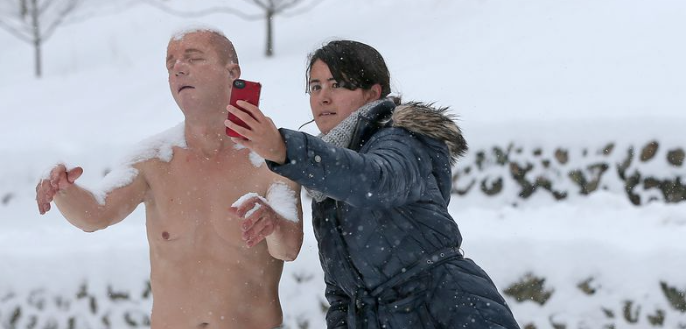
I am a data nerd. Or at least a gear junkie for things that feed data. Or maybe I am just self-centered because I want more info about me. Regardless if it is self-centered or whole-centered, the insight-driven wearable revolution has opened a new dimension of self discovery.
I was first “tagged” by @thelabSB with a Whoop to aid in my training in building physical resilience in my post “athlete” life. To that point, I thought sleep was just for the tired. But after seeing the impact that a slight variance in my sleep hygiene had on my heart rate variability (HRV), I was a convert that sleep should no longer be left for the last thing on my to-do list.
Your HRV is a pretty cool little indicator light. It is the nervous system’s gauge how ready you are to handle load, both mental and physical. While it seems backwards, the higher the heart rate variability, the better we can handle the strain. Kind of like moderation serves all, so goes variability.
You know the old saying, what you focus on, is what you get. I got more resilient.
I discovered that my body’s readiness or recovery was not isolated to the amount of sleep. Although more sleep is typically better than less. I experienced higher recovery numbers when I would consistently go to sleep and wake up within the same window of time and when the conditions of my head and gut were free of complications. For example, it is crazy how a late meal or a single drink of alcohol would drastically impact my body’s ability to use sleep to recover from the day’s efforts.
I am not sure why I was surprised by this, but we are truly like the tide. Powerfully reliable, but in stress and without the harbor of rest, we are chaos.
The other “wearable surprise” was how much of a positive impact a low-effort or non-workout activity would have towards my daily fitness standards. I have always been aligned in the traditional one to two hour workout, 3+ times a week schedule to check the box for good health. While I know these are still important parts of maximizing fitness, it was my hourly conference call walk for FluidStance that surprised me in how much “good strain” my body would endure without the time suck and disruption of getting into workout mode.
I still love the “high” of pushing the envelope that a walk or balance board for your desk cannot replace, but I no longer underestimate the power of a good walk and sleep hygiene. In my post-athlete life, I have become a “Sleep Walker.” It would have been nice to known about this when my output was measured in hundreds of seconds, not profit and loss statements.
Over the last five-plus years, I have worn many wearables including Whoop 1.0, 2.0 and 3.0. I took a spin with Garmin’s Fenix 6.0 Pro for a good year, and for 2022, I have worn Oura’s Gen 3 ring as my wedding ring. Much to my wife’s disappointment, Oura’s ring has yet to improve my heart’s ability to openly verbalize my emotions (HVE); but its sleep data is really solid.
Hardware recommendations for wearables:
From my athlete’s mentality, Whoop’s overall experience is the best, especially around training. Whoop’s hardware is beautiful and watch-like. It also comes with some swagger for the days I wanted to “scream” I am a wannabe athlete. However, it was frustrating to have to wear a Whoop on one wrist and a watch on the other due to the absence of a basic feature, time of day. I love Whoop’s minimalist look and long battery life, but a simple small time display would have made it a complete winner among what I have tested.
Garmin’s Fenix was great for my days as an adventurer with its altimeter, topographic mapping and body data, but its data reliability related to sleep and HRV was not there for me. The watch was a beast as a hardware statement which reminded me once upon a time I lived in the mountains. At the same time it was heavy and a burden to get the wrist sensor to sit next to skin for best results while sleeping or working out. Not to mention the sensor’s lights on a loose wrist would light up the bedroom making my dog and wife think martians were invading earth on a midnight post-50-pee-run.
Oura has been a nice low impact solution, especially for sleep. I truly miss the athlete’s mentality that Whoop’s interface brought to my day game, but I do not miss having a sensor depression on my wrist 24/7/365.
As a non-scientist data tinker, Oura’s sleep data seems more in line with how I feel when I wake up, but the workout tracking is meek at best. I know they are making solid improvements with heart rate tracking during certain workouts, O2 and body temperature sensors etc, but it is coming at a sacrifice to battery life in its little ring ecosystem. Whoop’s UI on the app is significantly better than Oura and especially Garmin. Oura’s fix would be simple if they just realized a thousand tinkers later, their interface feels disjointed.
If I had a magic wand, I would either put a very basic, small digital watch display on a Whoop and call it a day, or have Oura wake up from their sleep supremacy and deliver a better training UI.
Final Thoughts on Wearables:
Either way, what you measure is what you get. So I would encourage you to become more self-centered and get to know your data. It is you.
Lastly, go for a walk during a meaningless “data update” meeting. It will improve your sleep. Sleep will improve your data. Data will make you realize it does not take as much as you think to improve your life. Repeat.
“Sleep Walking” is Heath’s reflection this week in FluidStance’s Founders Flow series on https://blog.fluidstance.com/category/founders-flow/
About Joel Heath:
Joel Heath is founder and “chairman of the board” of FluidStance® and founder of the [GoPro] Mountain Games®. Prior to FluidStance, Heath was President of Teva Footwear and Founding Member of the non-profit First Descents – a free adventure experience for survivors of cancer and other life threatening illnesses.

